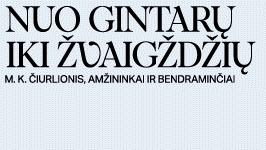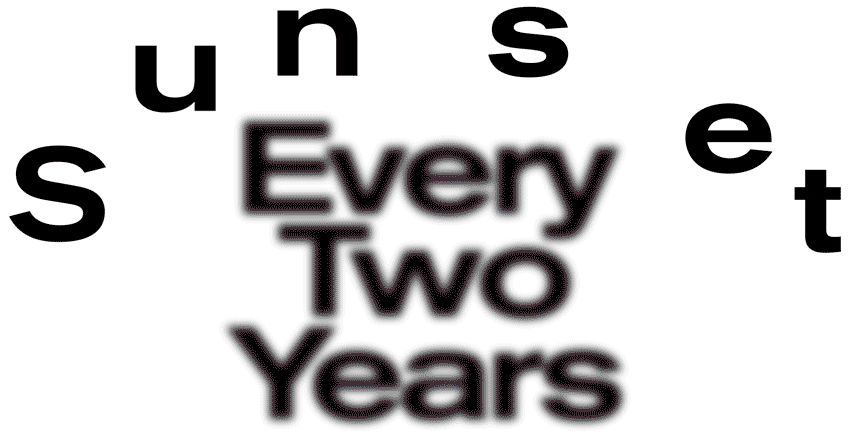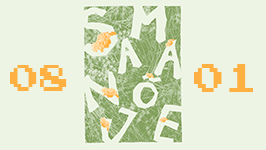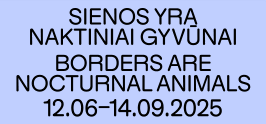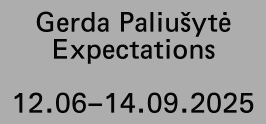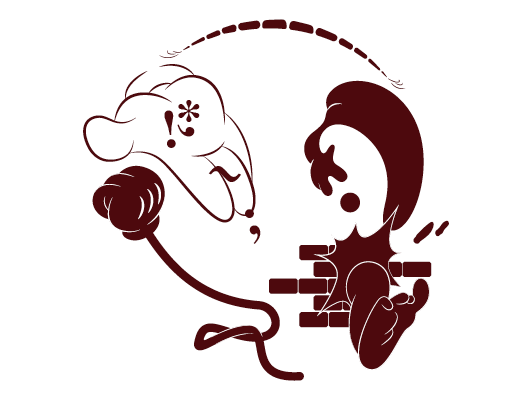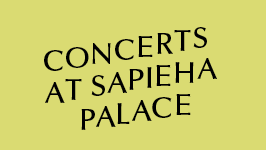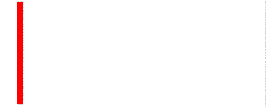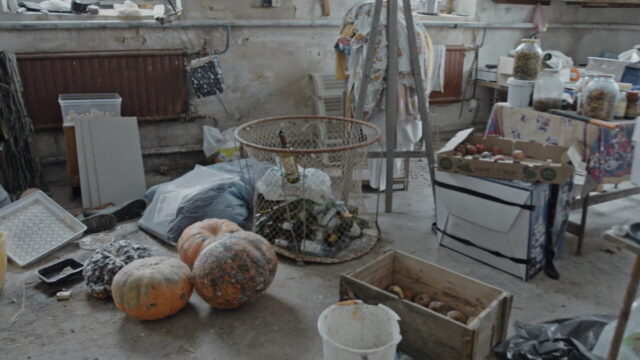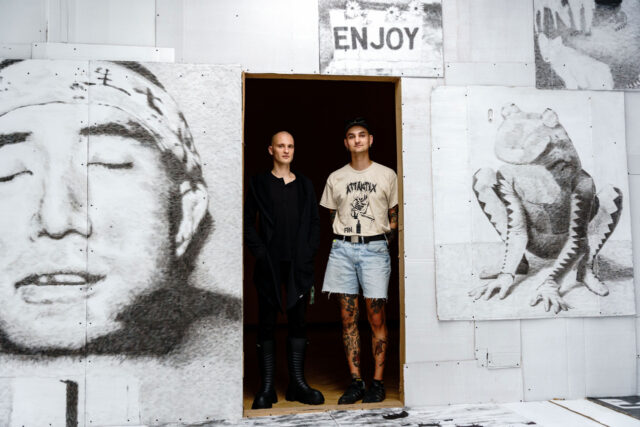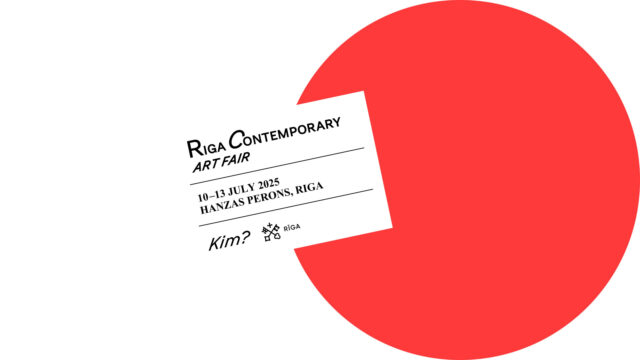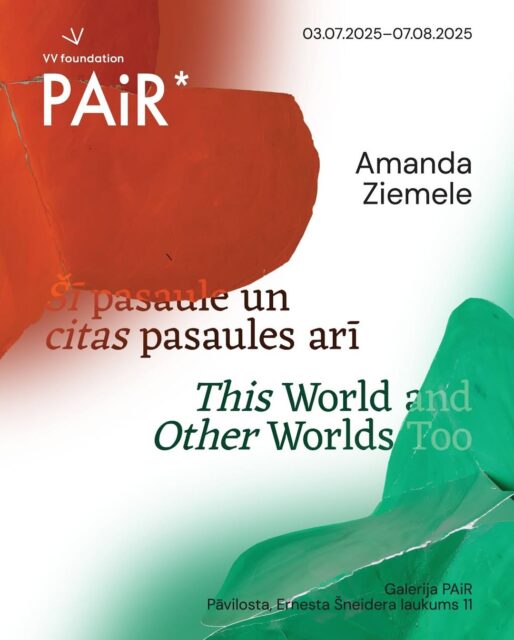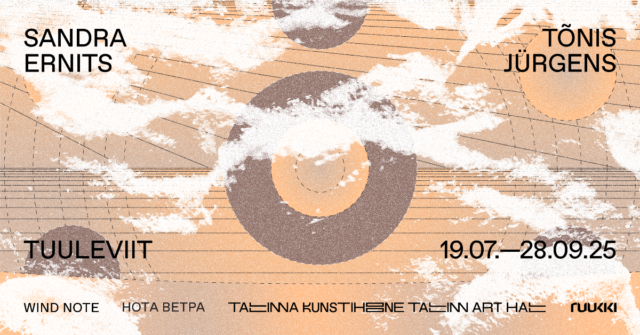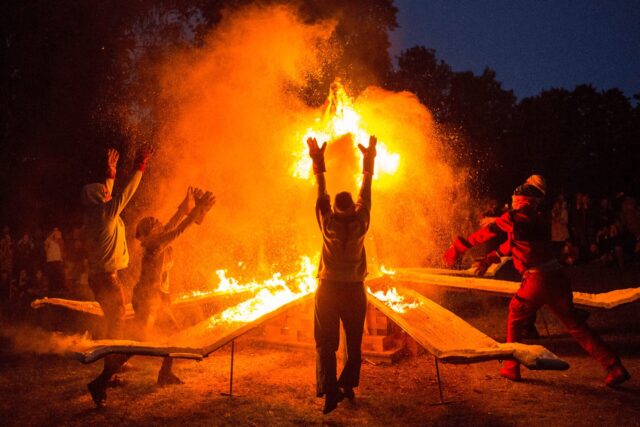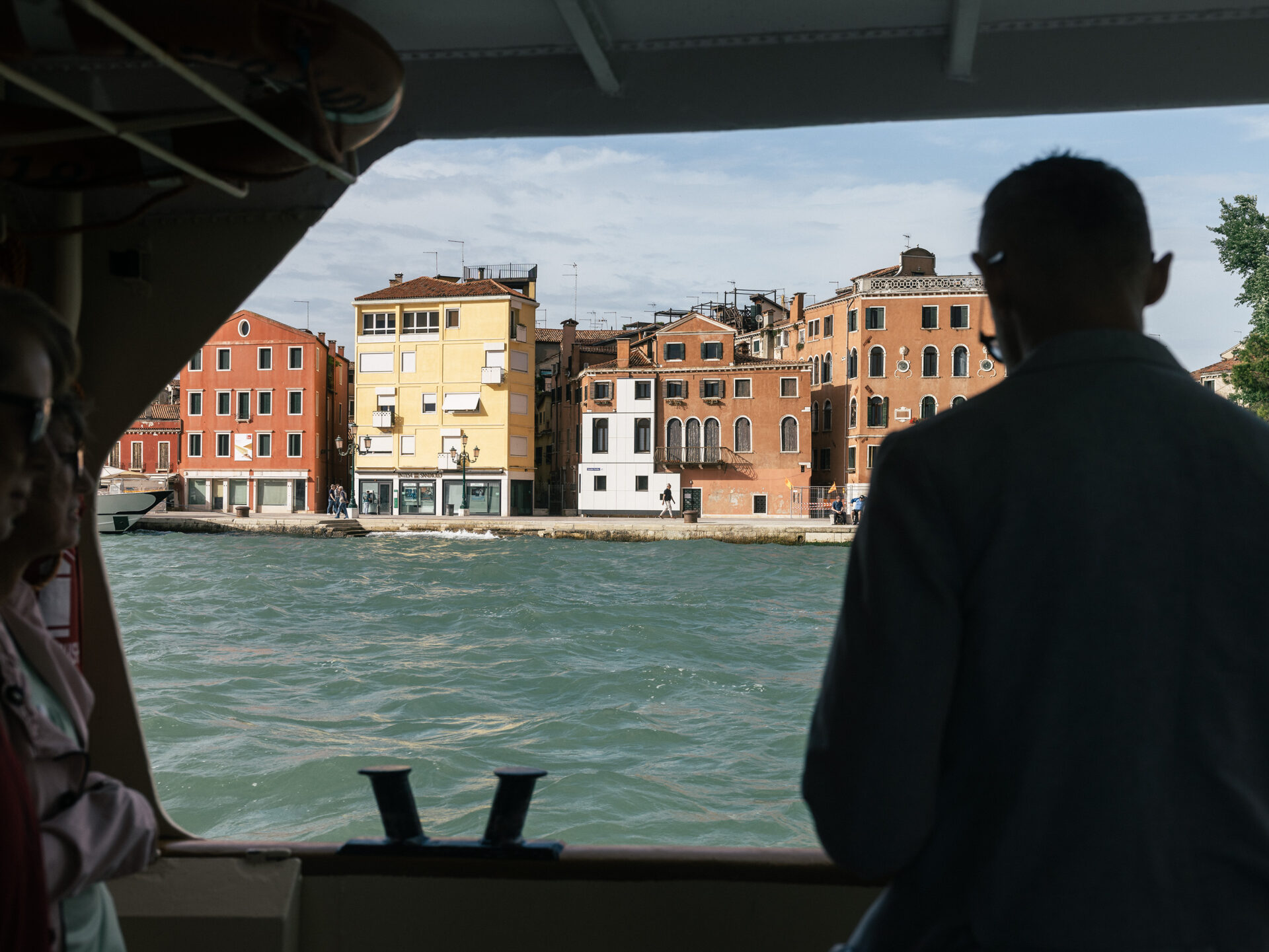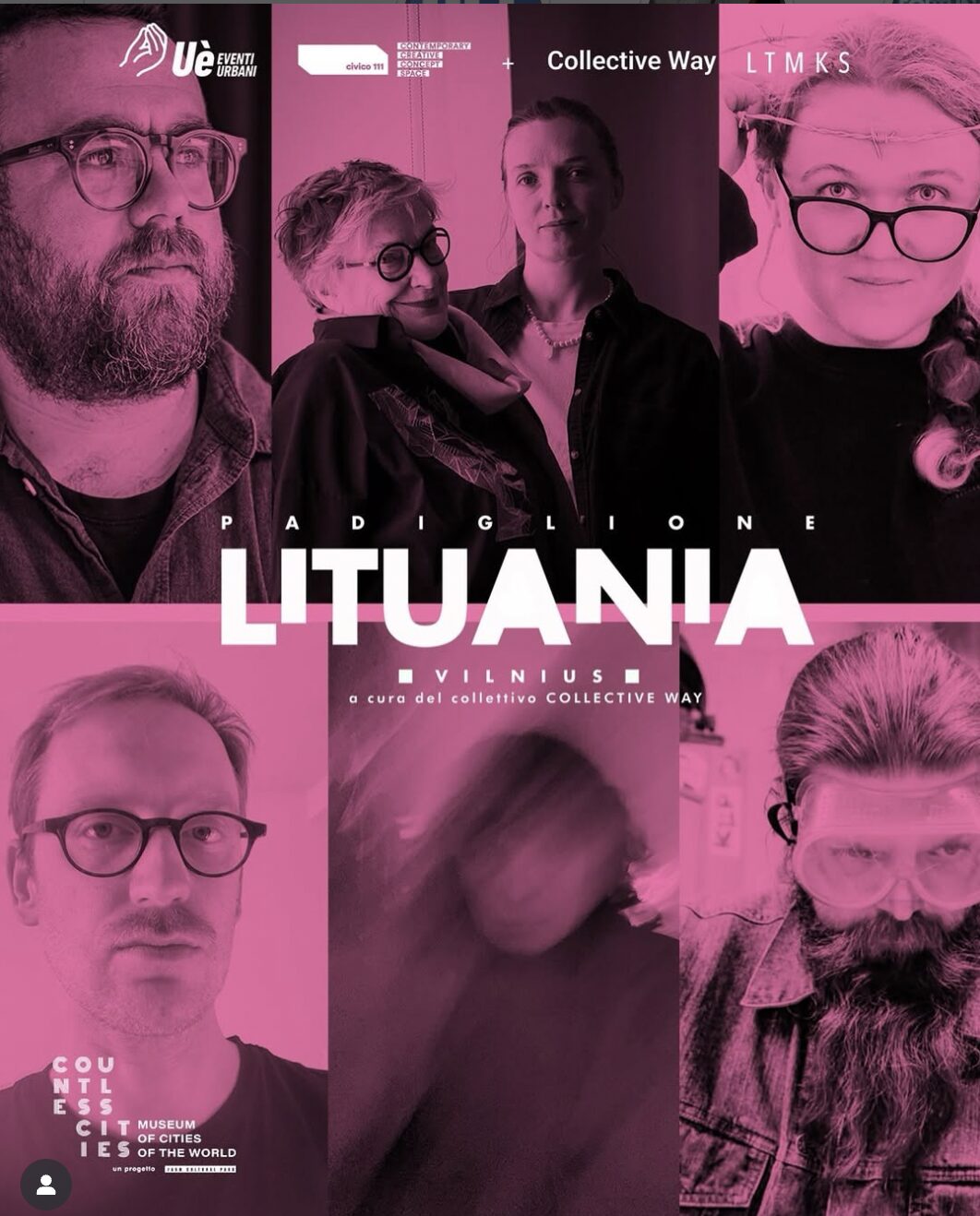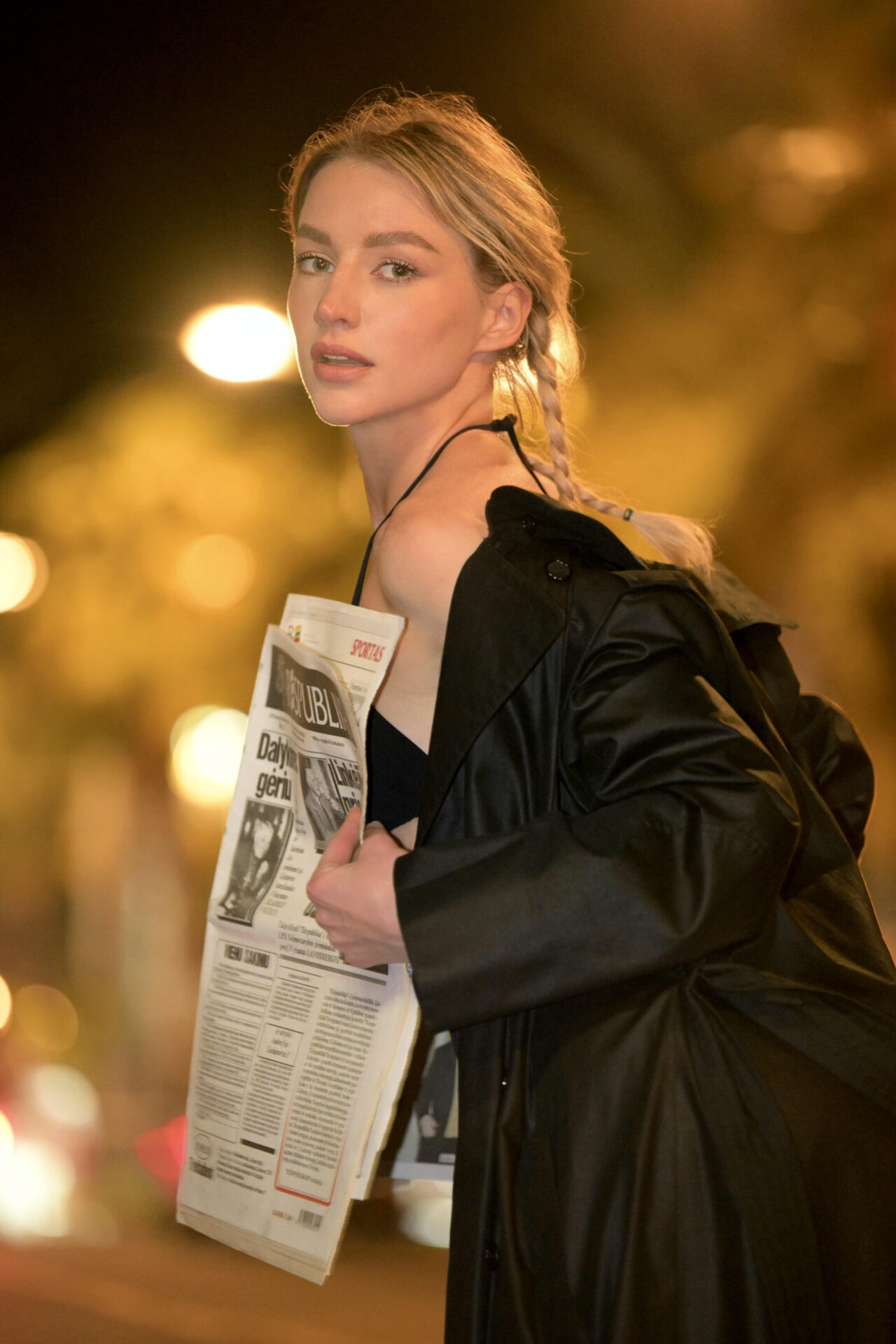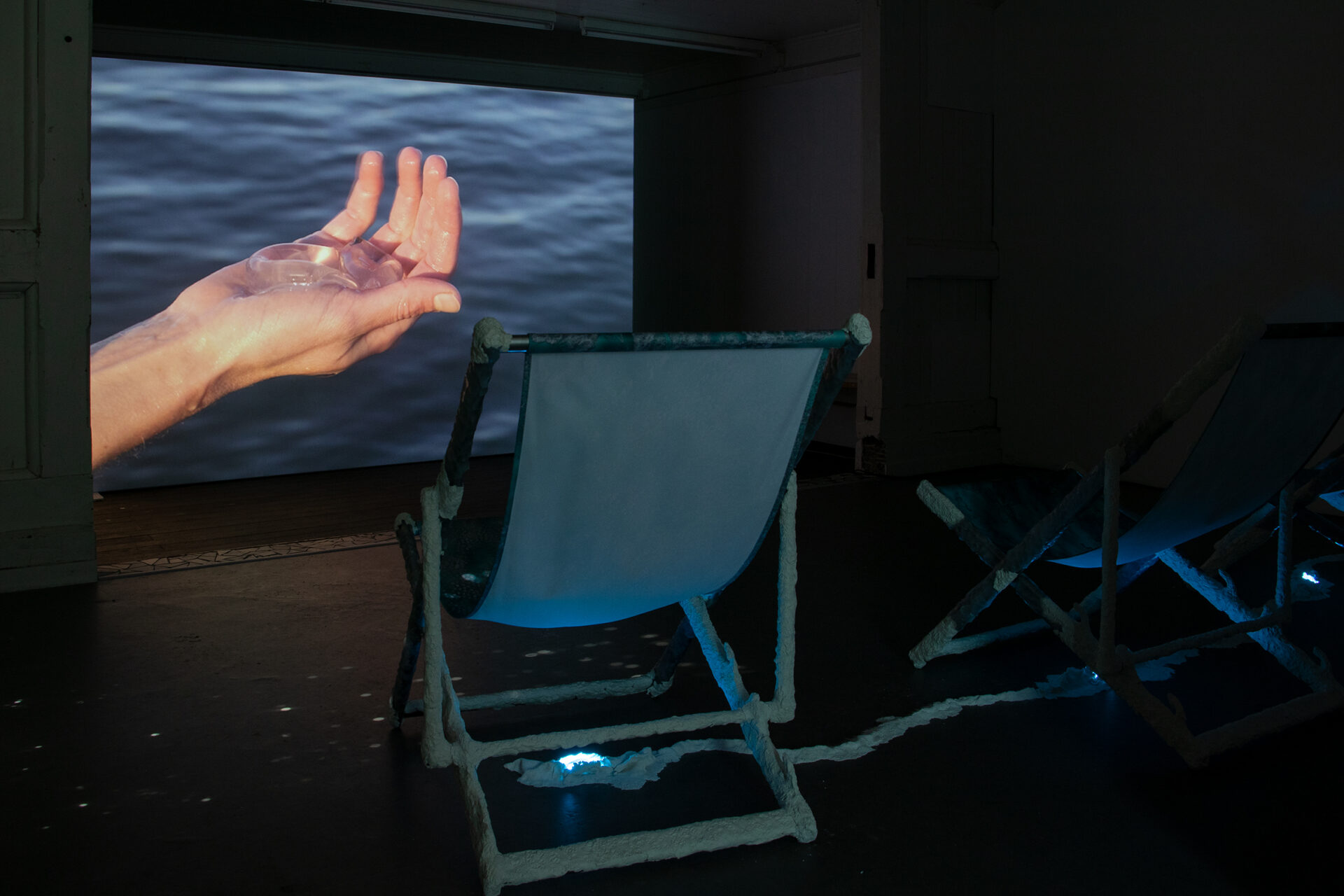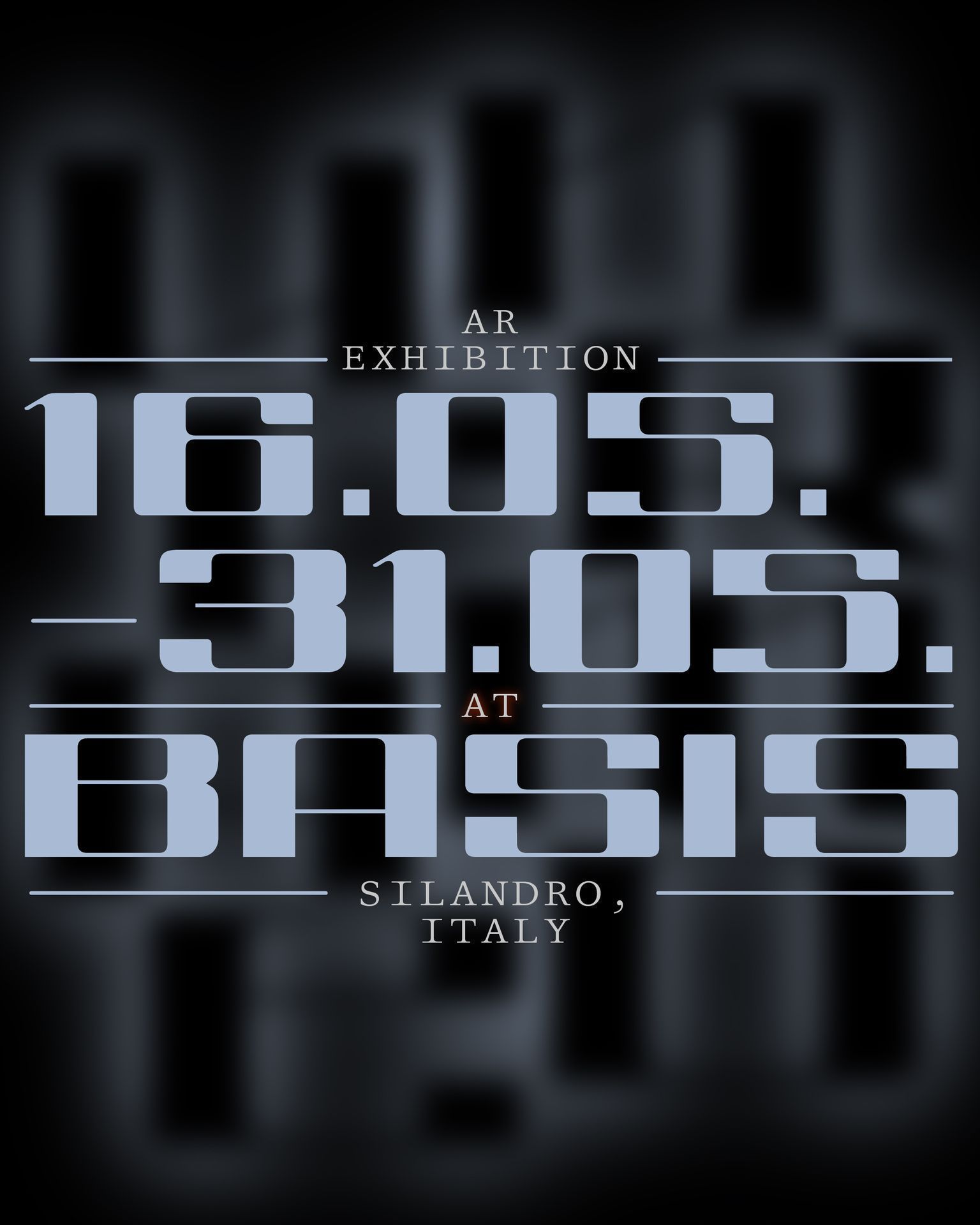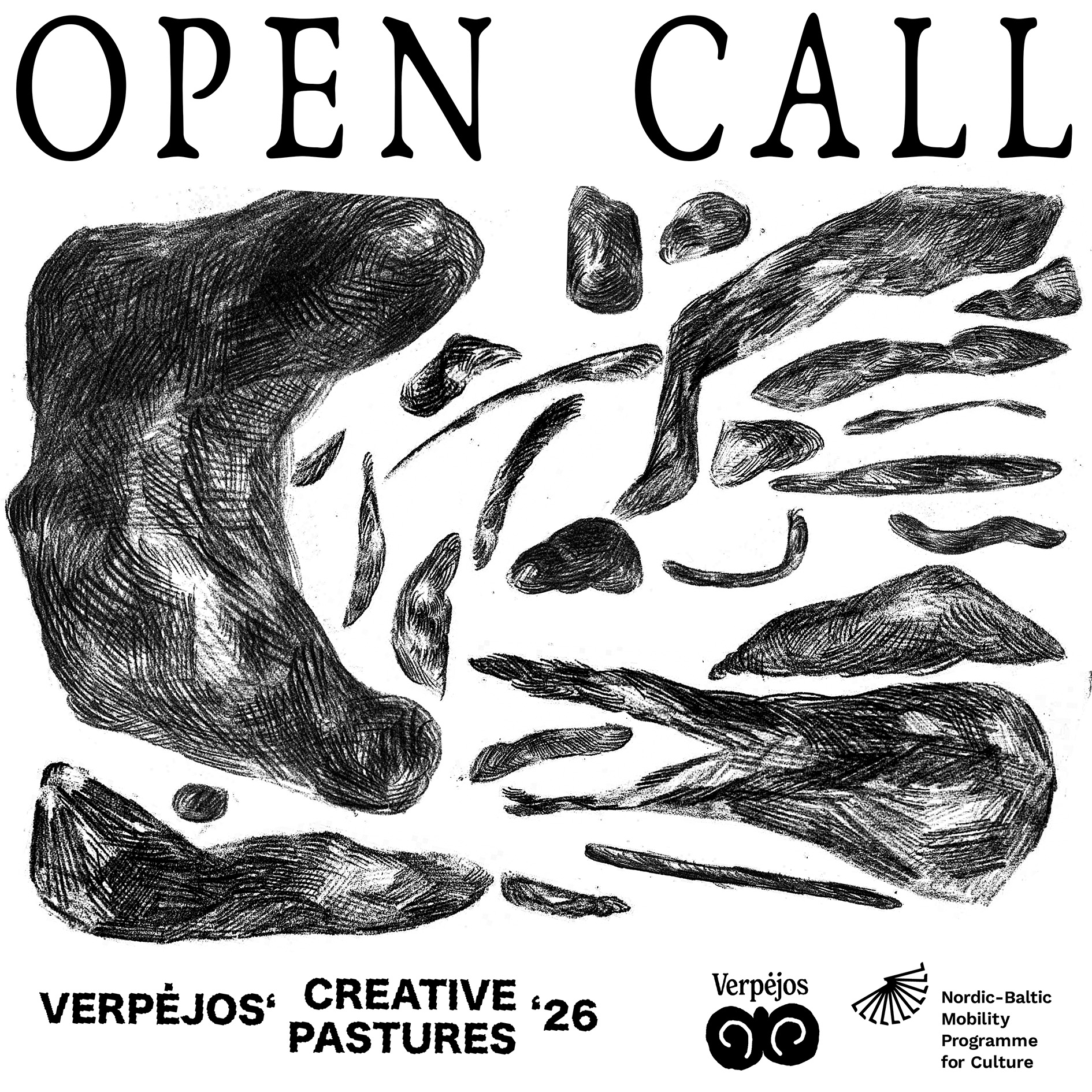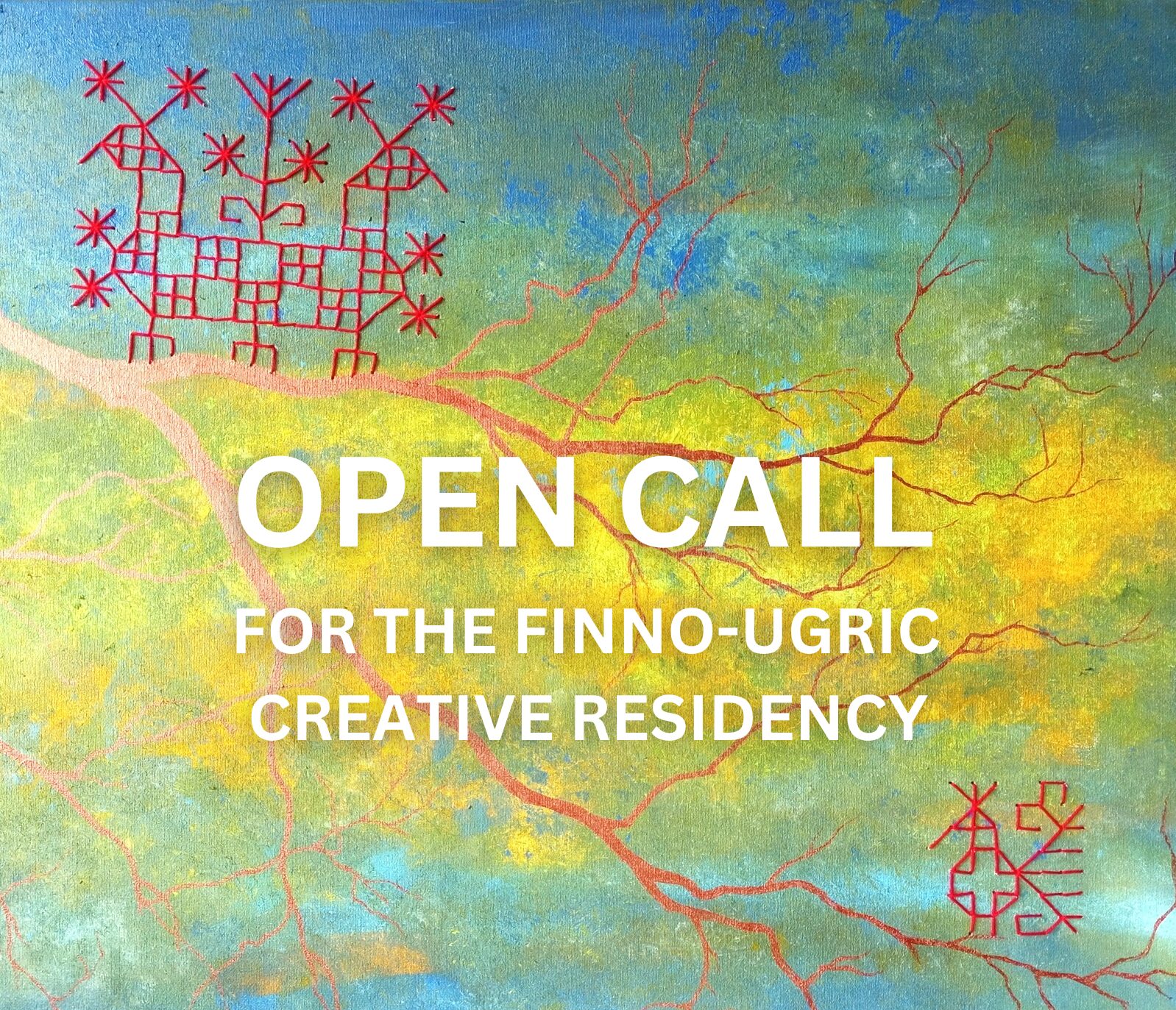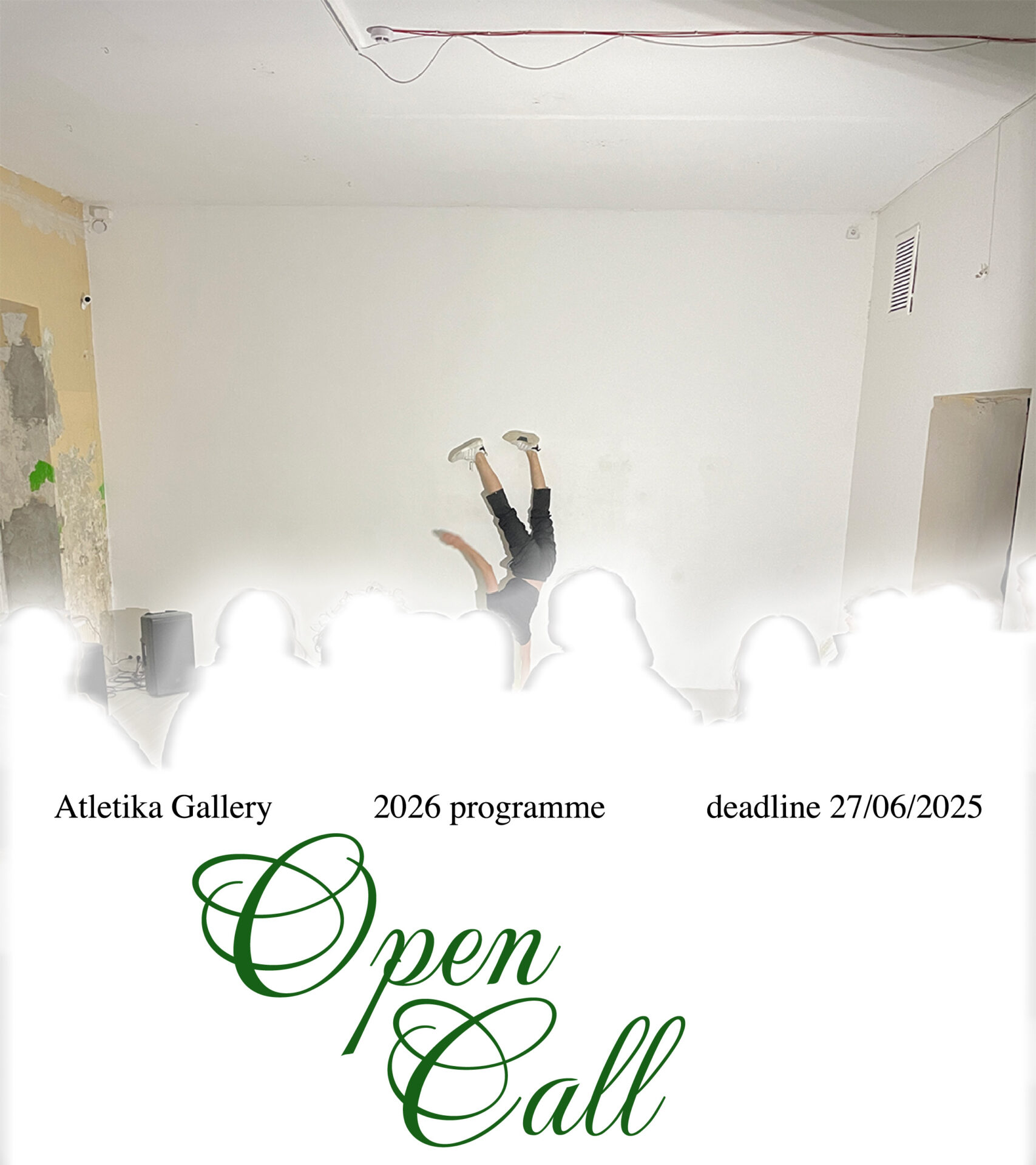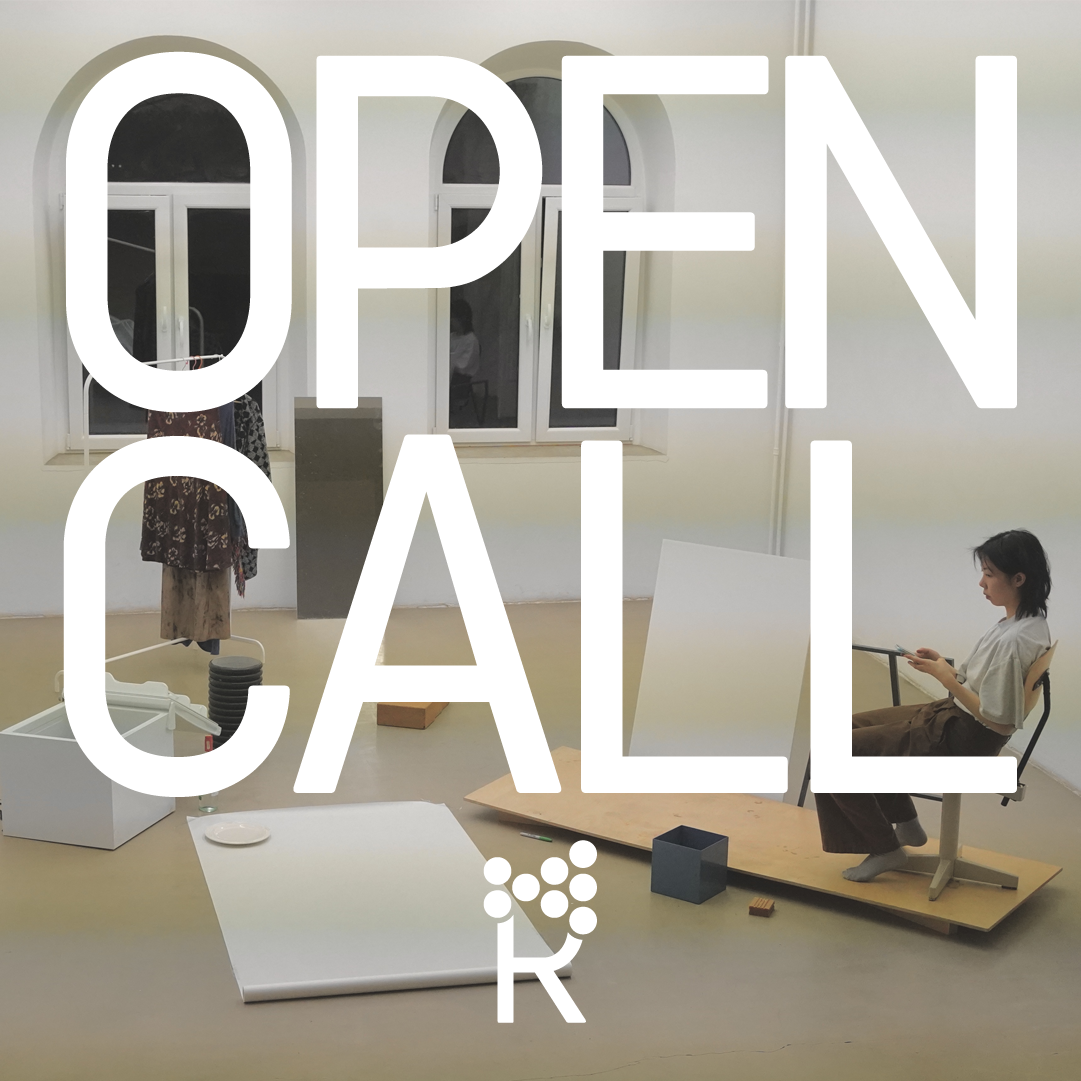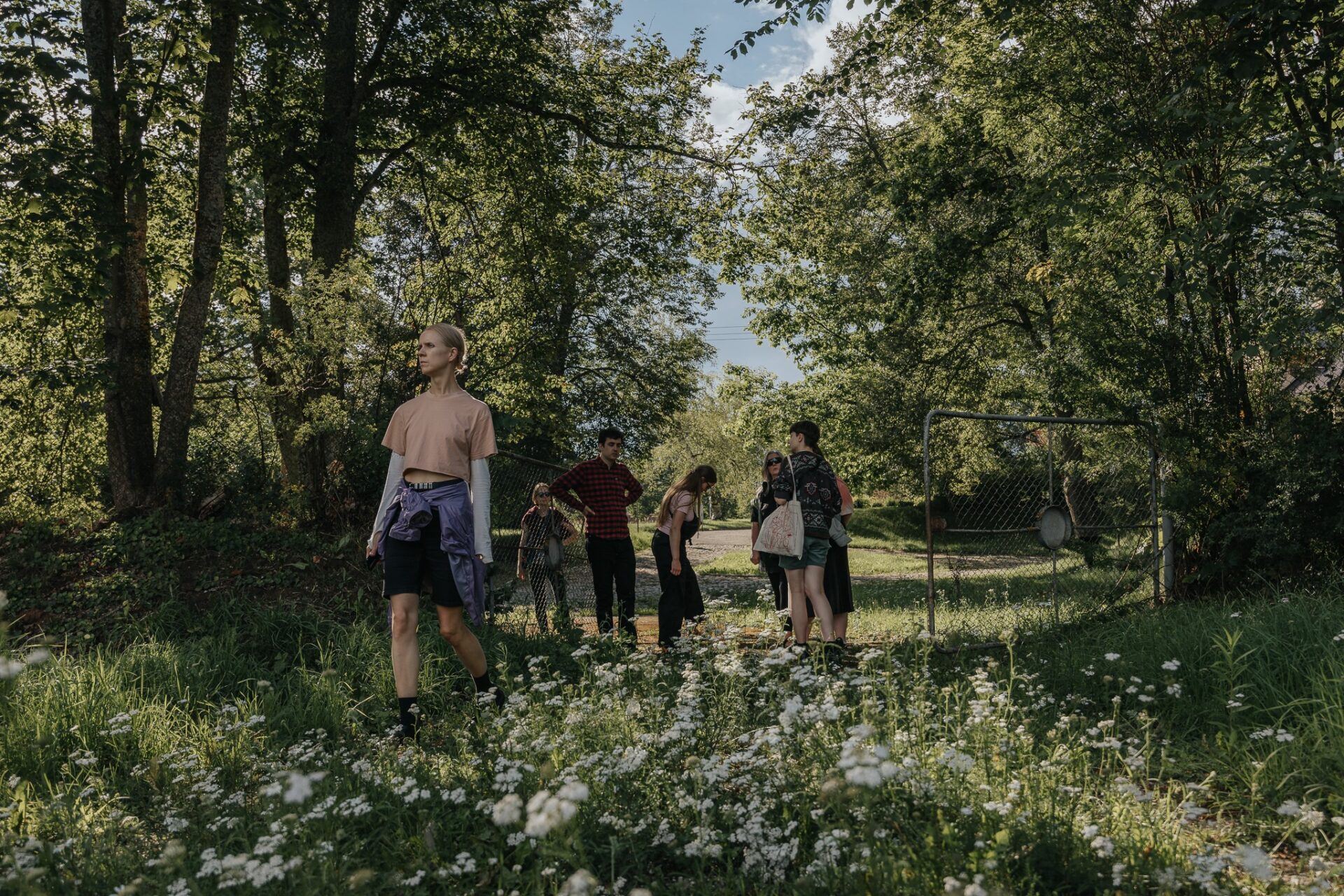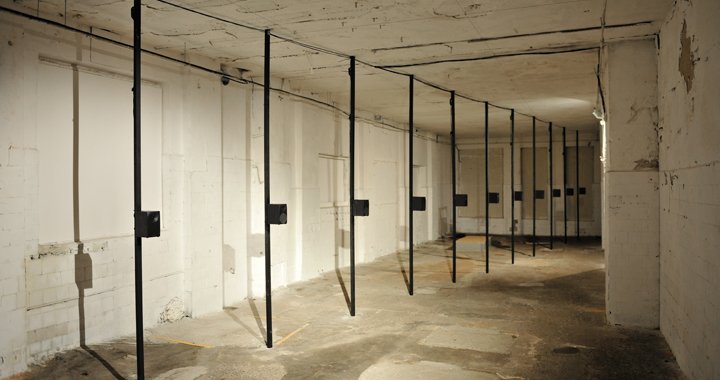
Krišs Salmanis, Anna Salmane, Kristaps Pētersons “Study”. Installation with audio loop. 2016
Art Festival Cēsis celebrates its 10th anniversary this year with its annual contemporary art exhibition demonstrating new works especially commissioned from reputable Latvian artists; that means a guaranteed fresh experience and not a tour of well-known creations already existing in the province. There is certain risk that invited artists could fail to meet the high expectations and resulting in less predictability. However, in most cases the chance is worth taking. In previous years, various curatorial approaches were used, also assembling international shows with foreign participants from nearby regions. General thematic frameworks have been pretty vague sometimes, as was storytelling in 2013, or even non-existent within several independent projects put together in 2014. If the viewer was often left wondering what on earth held the exhibited works together back then, the situation is much clearer now. Landscape as a unifying theme is very unmistakable and down-to-earth, commonly attributed to some sort of Latvian sense of life: “In the art of Latvia, landscape has always been both a magnet of public attention and a significant phenomenon – not least due to the fact that it is the painter Vilhelms Purvītis, and his landscapes, that serves as the initial point of reference for the art history of this country” (from the annotation of the show). Purvītis’ status as a forefather of Latvian art is also confirmed by the privately sponsored Purvītis Prize launched in 2007 which is awarded to a different contemporary Latvian artist every two years. Their work has, reasonably, little to do with the painter’s delicate snowy landscapes in line with the late 19th to early 20th century stylistic trends, except, perhaps the openness to world trends of the time along with some synthesised, harmonious approach.
Borrowing Hegel’s well-known conception of various art forms dominant in different epochs (architecture in Egypt, sculpture in Ancient Greece, painting and finally music in Europe), a peculiar passing of a “baton” of genres is, indeed, also present in Latvian art. Landscape was certainly dominant around the turn of the 20th century, while still life excelled in the early 1920s as a polygon for geometric experiments, but after the Second World War figural compositions were extolled under the conditions of the Soviet ideological regime. However, landscape (largely in painting, but also in graphics and some examples even in sculpture) was still present throughout, and was noticed also in the early days of so-called contemporary art. For instance, in the video installations by Anita Zabiļevska, namely her work Five Identical Landscapes that was awarded when it displayed at the Soros Centre for Contemporary Art-Riga’s annual exhibition Zoom factor in 1994.
DIALOGUES WITH EUROPEAN TRADITIONS
Thus the question of whether landscape needs to be painted, no longer seems relevant; any means of expression can be used. Still, there are painted landscapes in this exhibition too, like Paula Zariņa’s monumental triptych Parallel Landscape. Her individual style is marked by thin, hazy layers of paint, most often without any identifiable objects, though here there are some – a lonely piece of what reminds us of classical architecture or sculpture “floats” in a foggy landscape, whose southern character is outlined by a mountain range in the background. Still, the title is rather unclear – a parallel landscape to what exactly… to the perceived reality? Are man-made objects a part of reality parallel to nature? This seems more plausible, but the dialogue between nature and culture remains a very provisional possibility.
Inga Meldere’s series of works titled References to Namesake Paintings by the Italian Renaissance Artist Piero della Francesca also belong at least partly to painting, although the thin, hardly visible lines and brushstrokes could easily be missed. Earlier, Meldere had created fragmentary, seemingly unfinished and enigmatic compositions, a sort of painterly minimalism but the works on view now are more reminiscent of colourful windows with gentle gradations of hues. However, like a lot of things represented in art, this is an illusion, created here by fluorescent lamps in the wall niches under the Plexiglas. Meldere has likely attempted to distil certain moods found in Piero della Francesca’s works, abandoning his complex Biblical themes. Thus there is a dialogue with European classical tradition, even if landscape back then was just a background against which some meaningful story had to be told. But the light, that would become so significant in the representations of nature in centuries to come, was clearly very important for Piero della Francesca (respective works that served as sources of inspiration can be found @gaismassendvics.)

Paula Zariņa “Parallel Landscape”. Oil on canvas. 2016
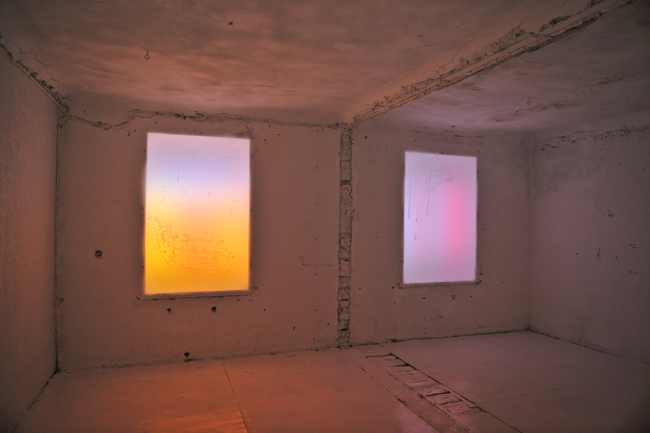
Inga Meldere “References to Namesake Paintings by the Italian Renaissance Artist Piero Della Francesca”. Plexiglas, fluorescent, lamps, acrylic paintings. 2016
VARIED IMPULSES OF NATURE
Returning to impulses more related to the local natural environment, Kristaps Epners’ 7-channel video Windows is a fascinating work belonging to the viewpoint of sensory experiences. As the spectators enter a dark room, they are enticed by numerous windows popping up on walls here and there. Landscape remains outside and largely invisible, more felt and heard than seen, synthesising somewhat romantic rural nostalgia with the power of new technologies. Some windows are quite old and shabby, covered with polythene rags and spider webs, possibly pointing towards poverty and depopulation issues in the countryside, while some others demonstrate pretty nice, flower-patterned curtains; insects are crawling along window-frames but outside there are birds twittering and cows mooing.
Nature as a place of relaxation for city dwellers is multiplied in the Album series of photographs by Ieva Epnere, known for her anthropologically-oriented studies of reality. Commenting on the images, she has said that “the best get-togethers and knees-ups have taken – and still are taking – place in the country, away from Riga. …that was exactly the thing I was missing in my life outside Latvia. I think that this unconscious love for nature is genetically inherited by almost every Latvian and passed on from generation to generation.” Is this really something specific just to “every Latvian”? Surely it could be doubted by people from elsewhere, but that does not preclude us from enjoying these snapshot scenes predominated by children both posing to the camera and playing in the brushwood.
It is possible to infer certain ecological subtexts from Kristiāna Dimitere’s object titled Lost Water, a somewhat Pop Art-like, brightly painted small pool (also reminiscent of a drinking vessel for pet owners); as water, expelled from its natural place in the river or lake, thus has no other option but to circle endlessly in the pool.
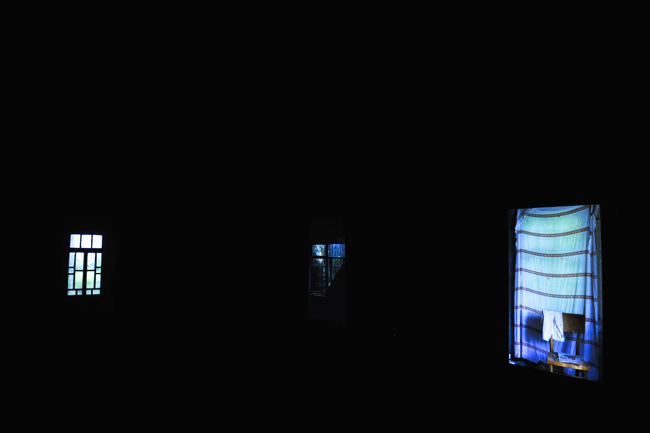
Kristaps Epners “Windows”. Audio visual installation. 2016
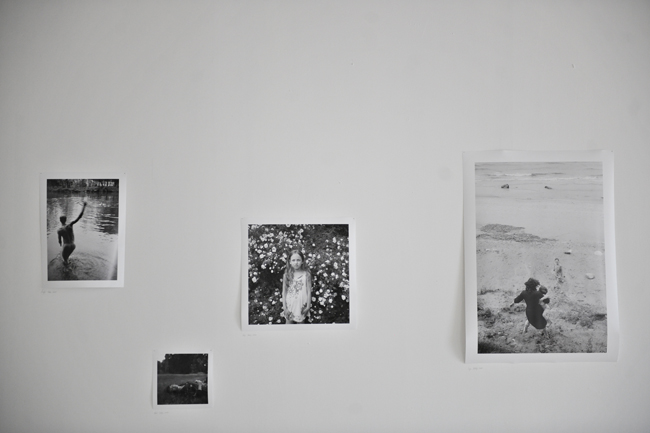
Ieva Epnere, photographs from the ALBUM series. Black and white pigment ink print on photographic paper. 2002-2016

Kristiāna Dimitere “Lost Water”. Painted fibreglass, plywood, polymer concrete. 2016
(NEO)CONCEPTUALIST INTERPRETATIONS
But in all, it is obvious that natural landscapes are not the most common objects of contemplation in the contemporary world. Sergejs Davidovs, designer by education and a known figure on the contemporary art scene, has exhibited computer screen “landscapes” apparently showing some programme in the process of installation with a range of options to choose from whilst one can sit in a chair to contemplate the process. But the funny thing here is that there is no process at all. The whole thing has been painted on canvas and is, therefore, brought to a permanent standstill. Achievements of science and technology have also served as a raw material in the work Actual Spacescape by the text group Orbīta in which an automatic queue management ticket printer is said to deliver messages from some distant uncontrollable space probe, reading something like: “The image of the asteroid conglomeration, compared with the last shot, taken with lens cap on, from the war correspondent’s flash drive, differs in only 34 pixels.” Every visitor can print a number of these souvenir tickets, rereading them later with the possibility of exercising imagination skills in the realm of landscapes never to be actually seen. Is there any sense in this? As humankind will, sooner or later, need to look for a new home on another planet or some exoplanet out there, it is probably not a bad idea to first imagine these future tasks lying ahead.
(Neo)conceptualist means are also used in the piece Étude by the duo Krišs Salmanis and Anna Salmane. Salmanis, who also had a chance to represent Latvia at the Venice Biennial in 2013, is known for his witty appropriations of topical international artistic tendencies, used to deal with more specifically local issues. Here, the viewer is presented with more lengthy reading material – brochures of interviews with Latvian and foreign scientists going about their research, ending with the sacramental question “What is the meaning of life?” (Very reminiscent, however, of a recent series of interviews in the journal Rīgas Laiks). Answers range from conclusions that there is no such meaning or it cannot be scientifically proved, to saying that it is joy, pursuit of knowledge, or even that there is no single answer to it, as all answers just reflect the individuals who are giving their answer, at those particular moments. In another room, there is a soundscape by Kristaps Pētersons said to have been created out of “the sound of their thinking”. This seems rather intriguing – how exactly might the “sound of one’s thinking” be obtained? It appears to be a bit like experiments one might see on a National Geographic-type of TV channel, with intricate devices used to measure neuron activity in someone’s brain, capturing thinking process as certain subjects are called to mind. Could it be that these measurements are being translated into sounds as well? However, it is quite certain that this soundscape must be the product of processing the audio files from the interviews which are quite interesting, but reading them on the spot seems hardly productive. One can surely make use of technologies once again, taking pictures of texts and uploading them to a computer later. Still, the meaning of the work itself remains pretty vague; the only version pointing towards some kind of deconstruction of all the rational scientific aspirations, as they are transformed into a primitive chaos of noises.
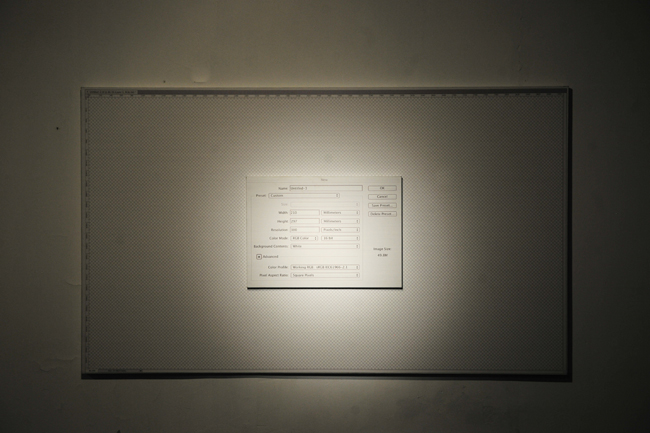
Sergejs Davidovs “Untitled 3”. Mixed technique on canvas. 2016
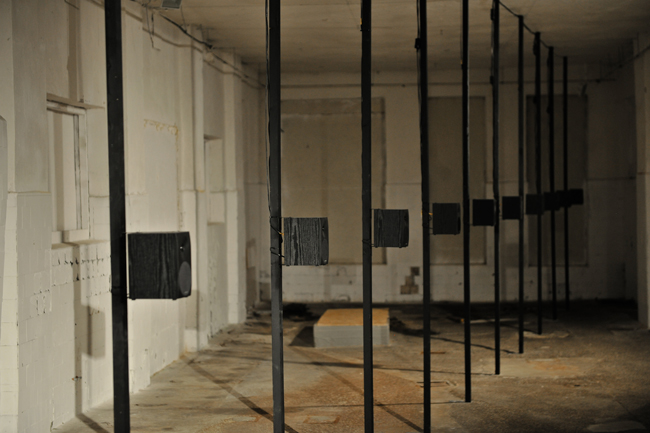
Krišs Salmanis, Anna Salmane, Kristaps Pētersons “Study”. Installation with audio loop. 2016
EXISTENTIAL MENACE
Unmistakably familiar from previous installations is the joint project by Sarmīte Māliņa and Kristaps Kalns titled I Will Save You Tomorrow. The object, now seen in the middle of the large room, could be reminiscent of an eclipse over a horizontally placed celestial object, with its black disc partly overlapping a white one (in their joint exhibition Pacieties (2012) at the Arsenāls Exhibition Hall, the artists presented a sort of altarpiece with a black disc covering the source of light behind it). Since the 1990s, Māliņa has brought a feminine version of the Duchampian ready-made tradition into Latvian contemporary art, exhibiting various objects and installations dealing with personally motivated emotional meanings. Here, a flower vase, as a symbol of romantic memories and transience of everything, has been made use of before, now complemented with a video of a small child on a swing. What are the dangers from which someone needs saving and could it really not be postponed until tomorrow? The menacing atmosphere is rather undefined, allowing anyone to fill it with their own personal phobias. Romans Korovins – known for his photographs, video and drawings which play on everyday realities transformed into visual jokes – has presented several colour prints with existentially charged titles, showing something appearing or disappearing within the landscape. The work largely exploits the viewer’s ability to read images as they would read messages from left to right, before it emerges that birth and death, hope and despair are essentially the same, the sequence being the only thing that matters.
Although the show – as I mentioned earlier – consists of Latvian artists’ works, there is one exception to this, which has served as an inspiration for the entire project – American filmmaker James Benning’s video Farocki, which gives viewers the chance to contemplate a slowly transforming clouded landscape for more than an hour. There is little doubt as to whether anybody would watch it all, but it is a good chance to exercise one’s patience and meditate on transformations which seem invisible at first, later attracting more attention as they accumulate. Such changes do not just happen in clouds; ecological or political systems are other fields to consider from this aspect.
While some works may present disputable or confusing aspects, the exhibition as a whole certainly deserves to be seen and appreciated, heralding the already traditional landmark town of Cēsis on Latvia’s contemporary art map this summer.
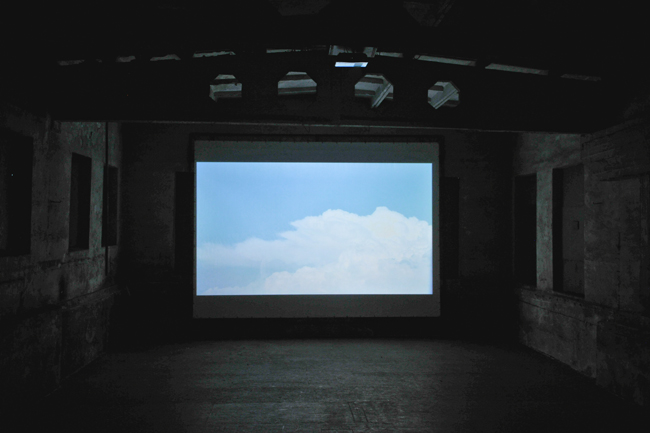
James Benning “Farocki”. Video. 2014
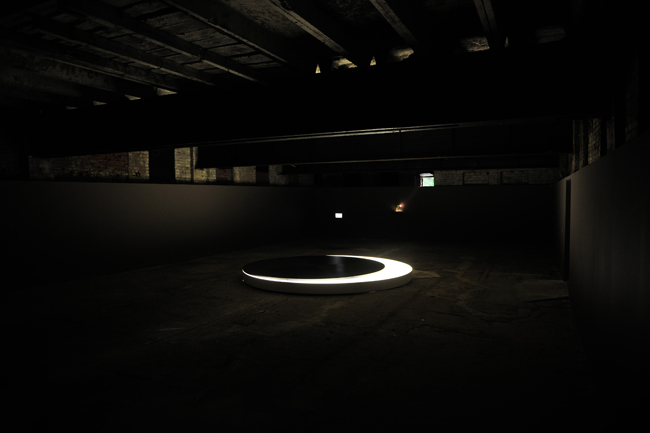
Sarmīte Māliņa & Kristaps Kalns “I Will Save You Tomorrow”. Multimedia installation. 2016
Photography by Kristaps Kalns.

